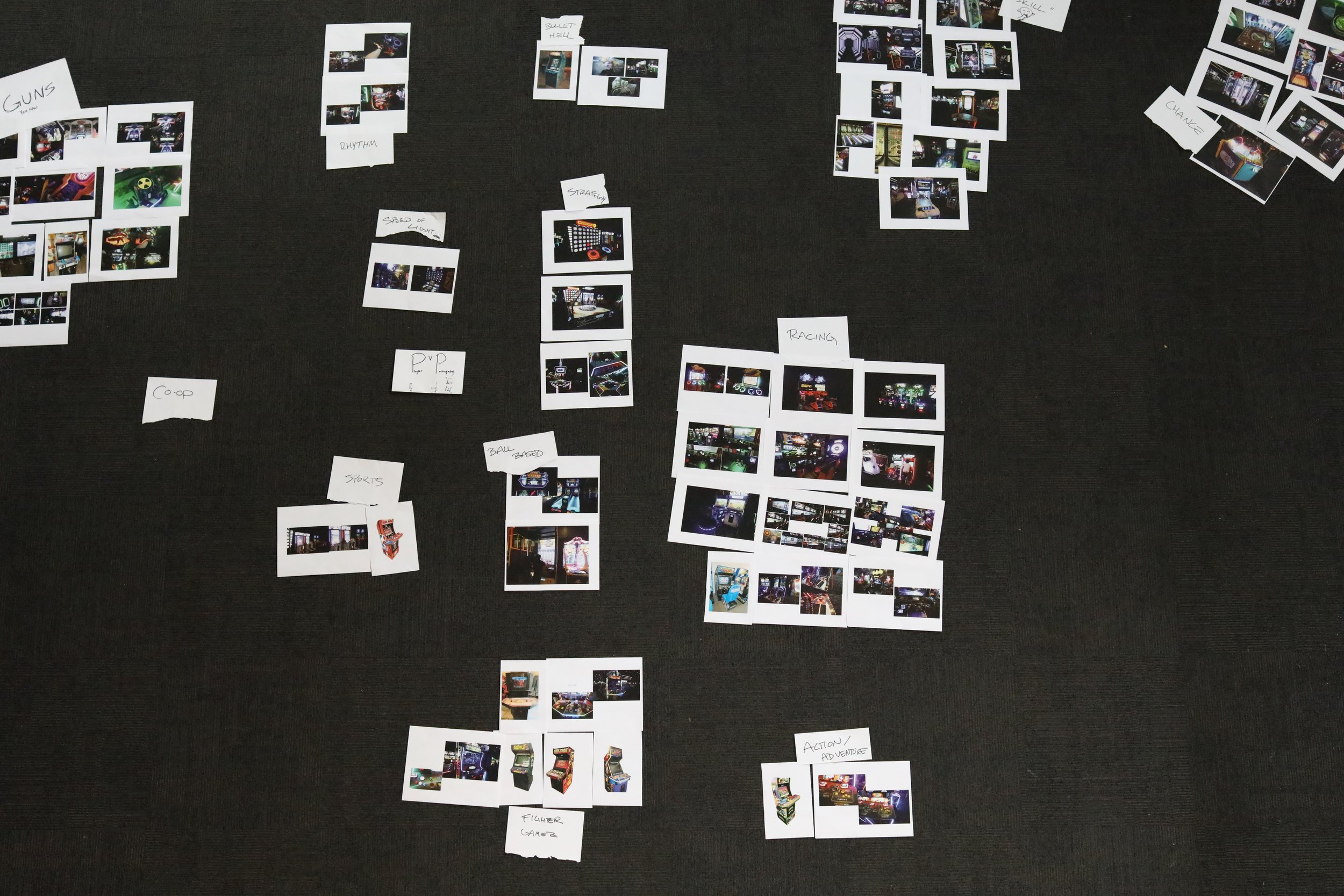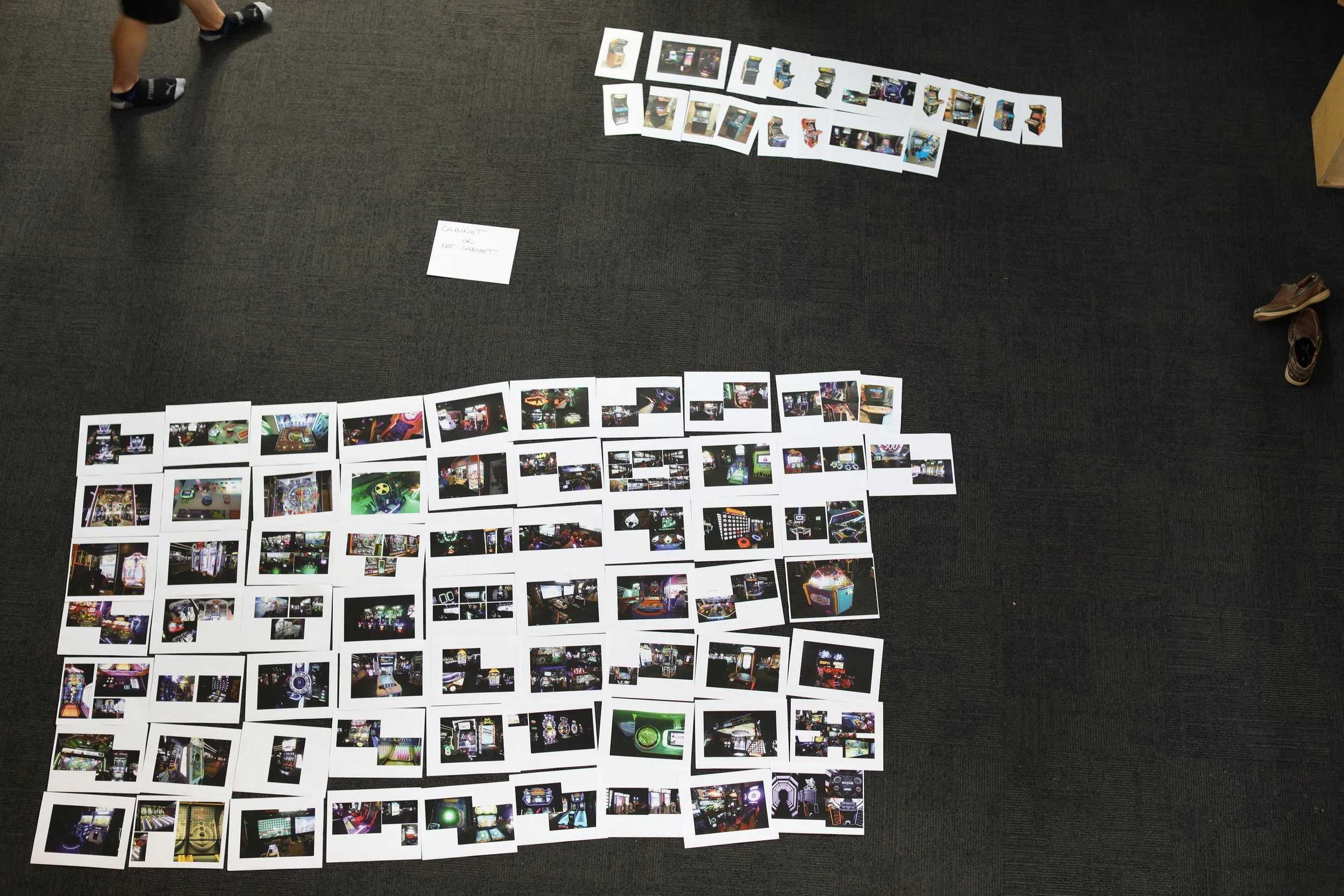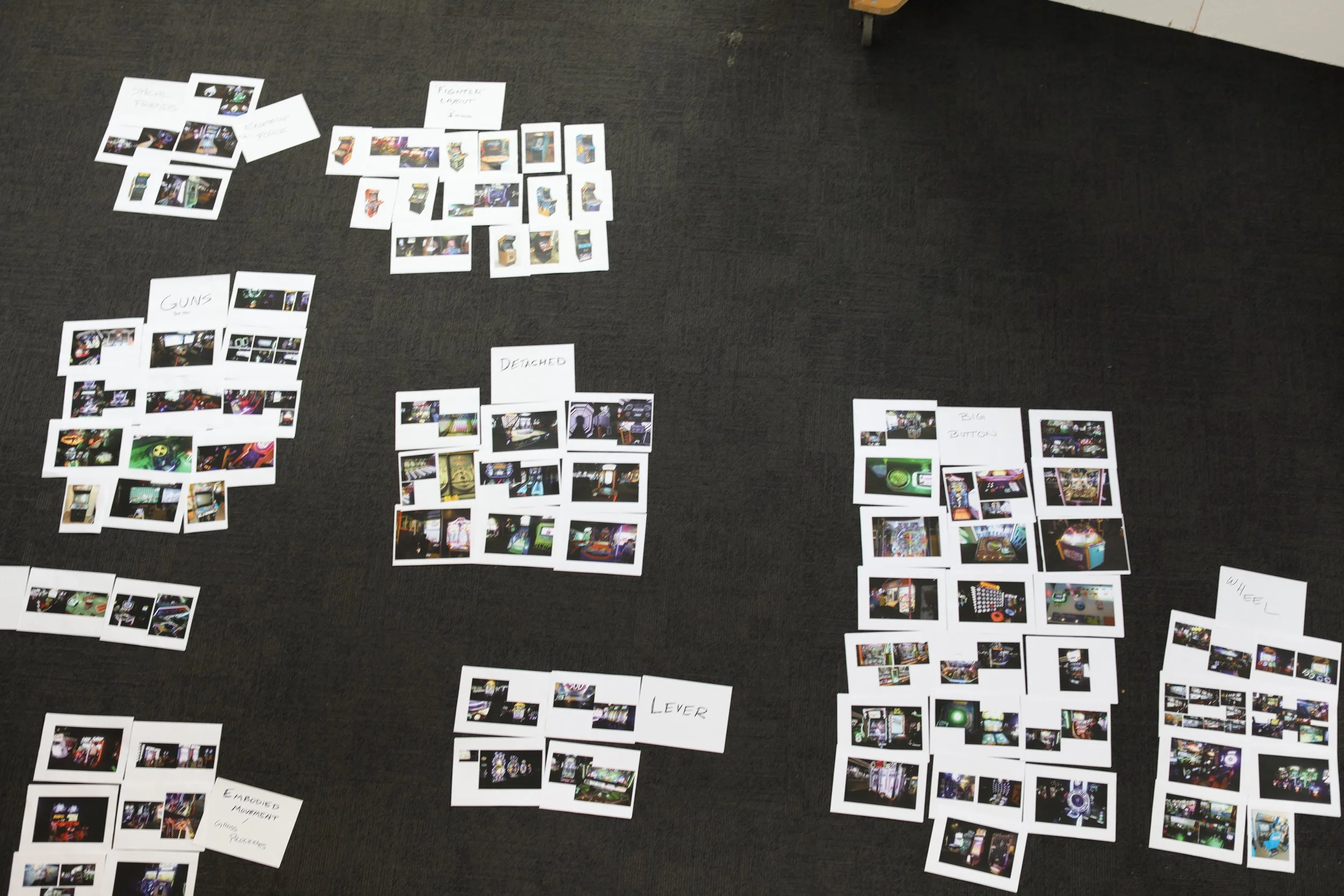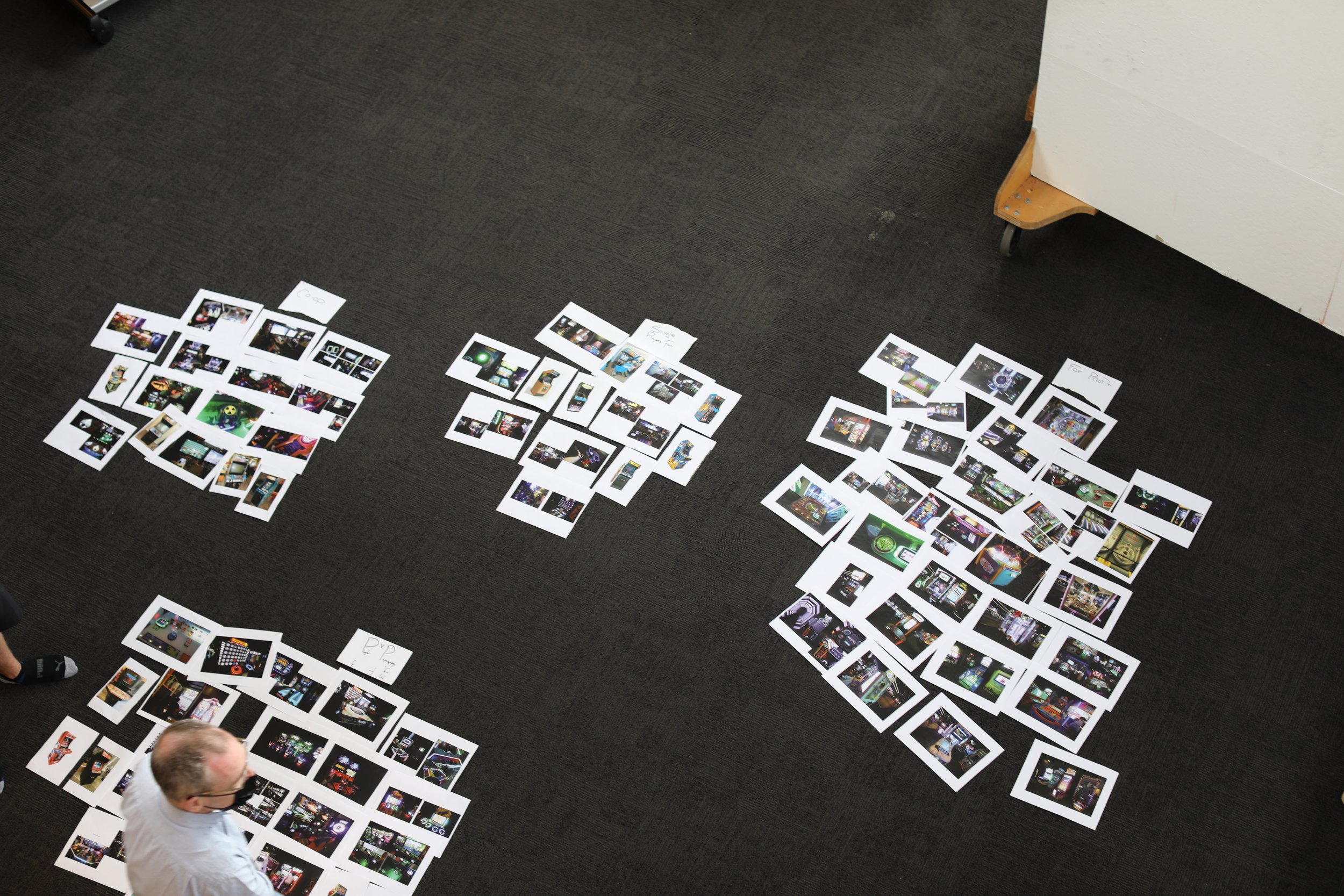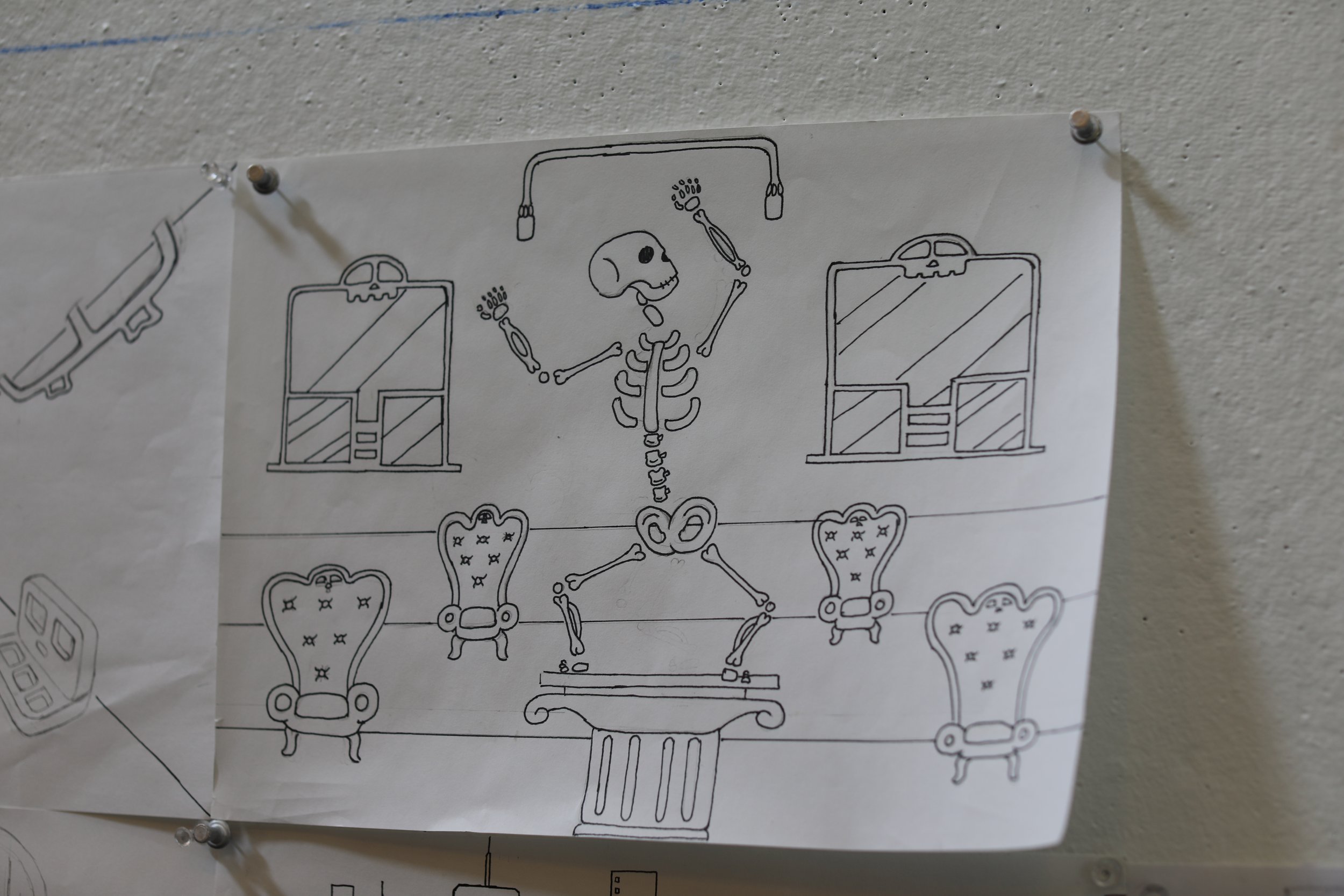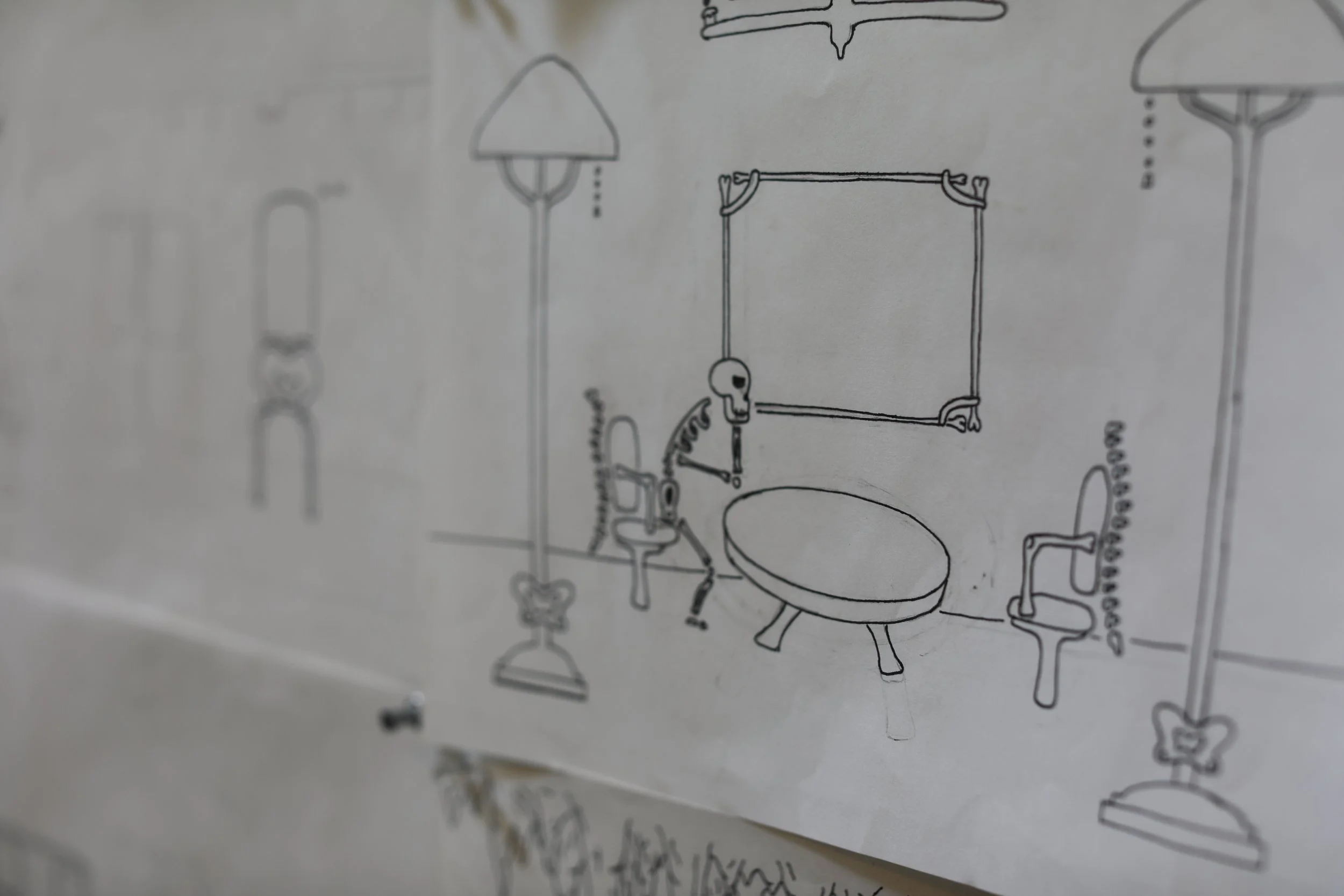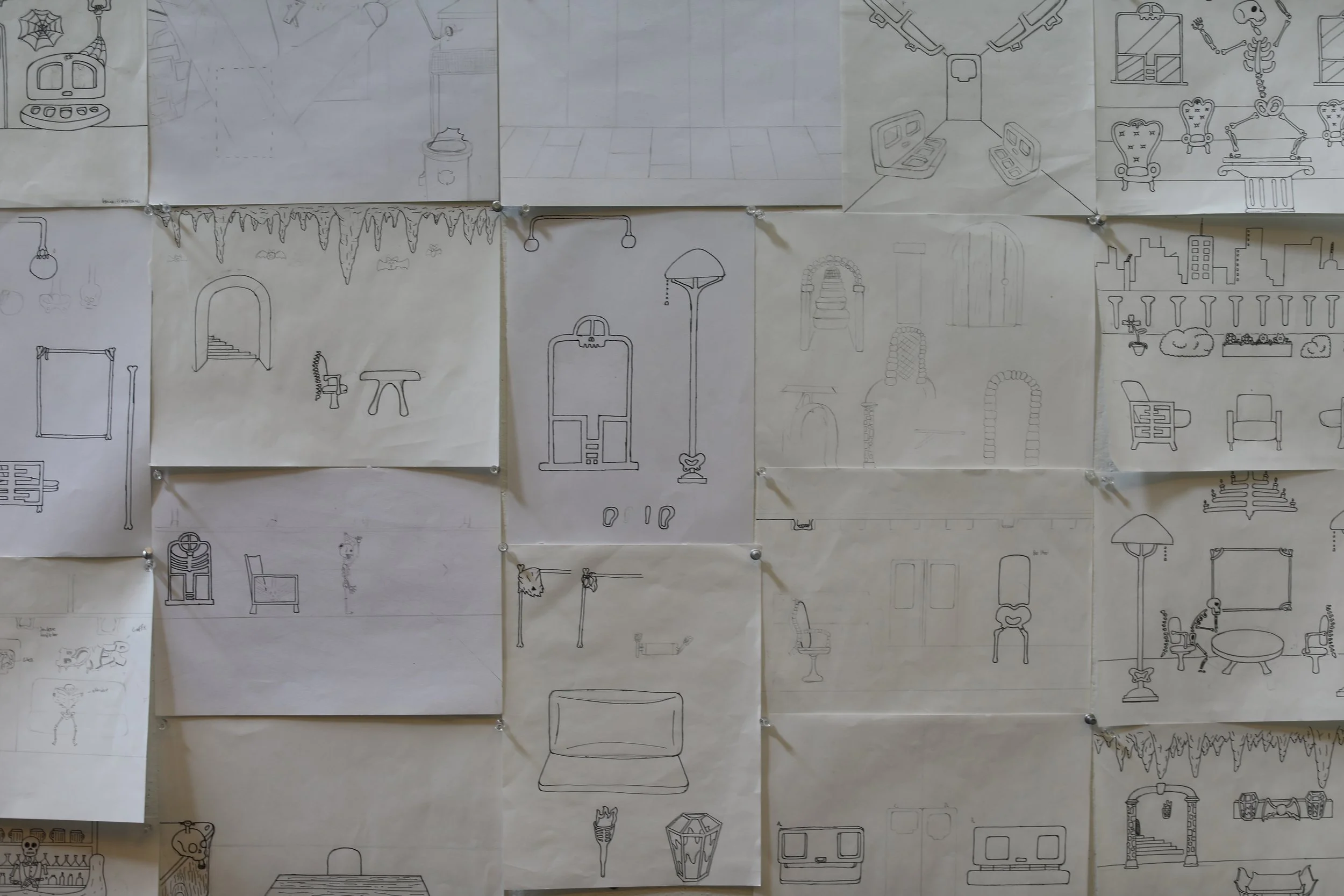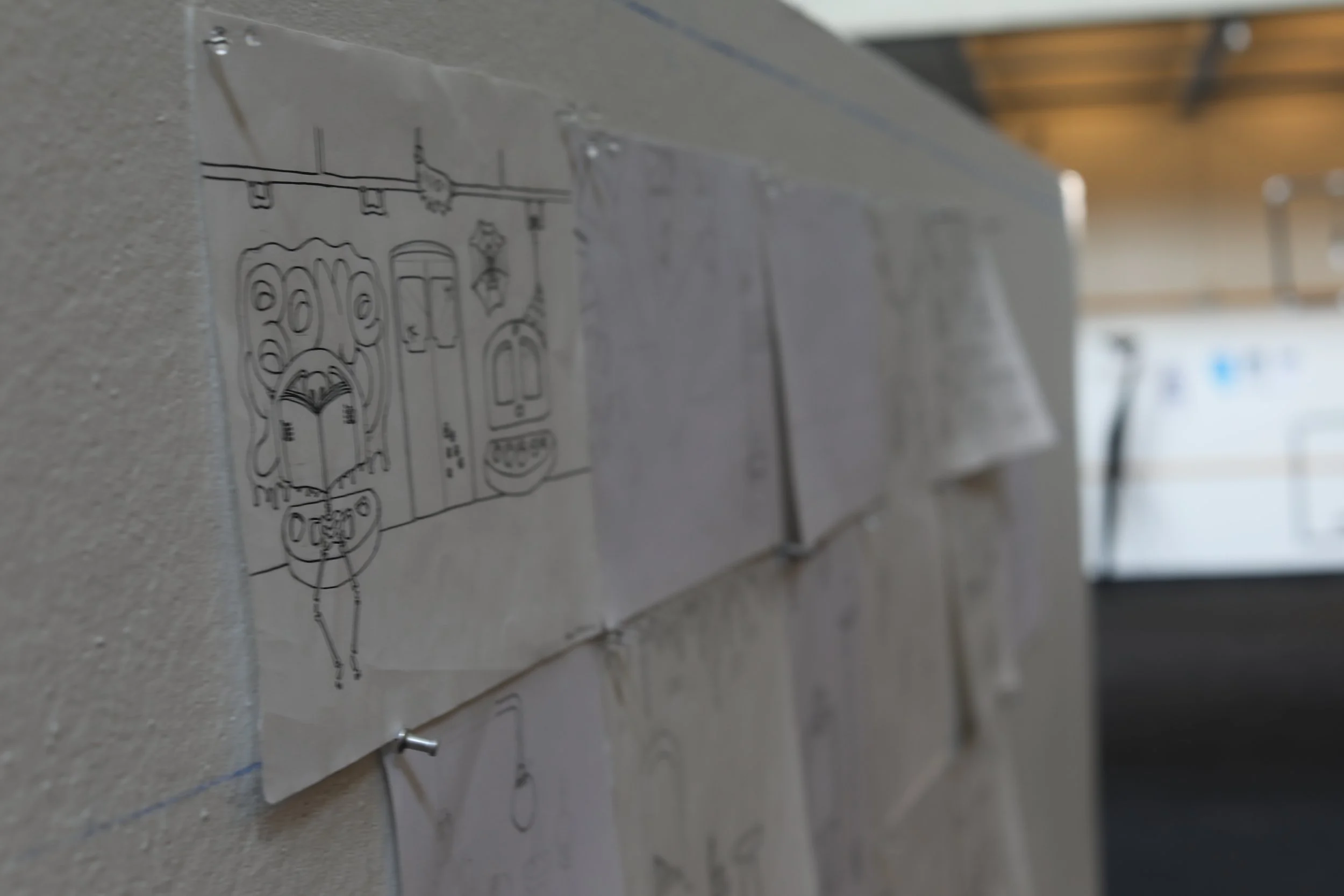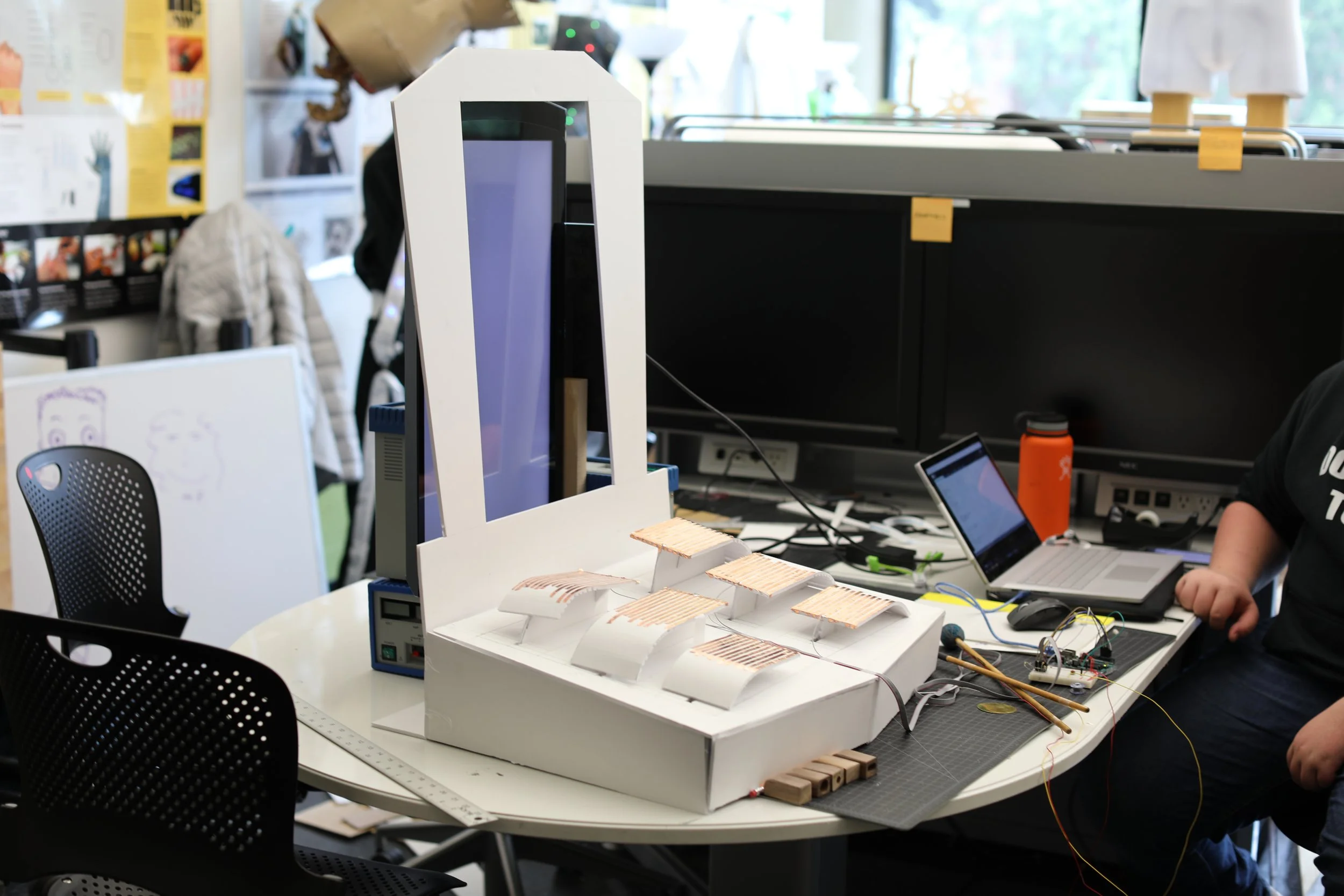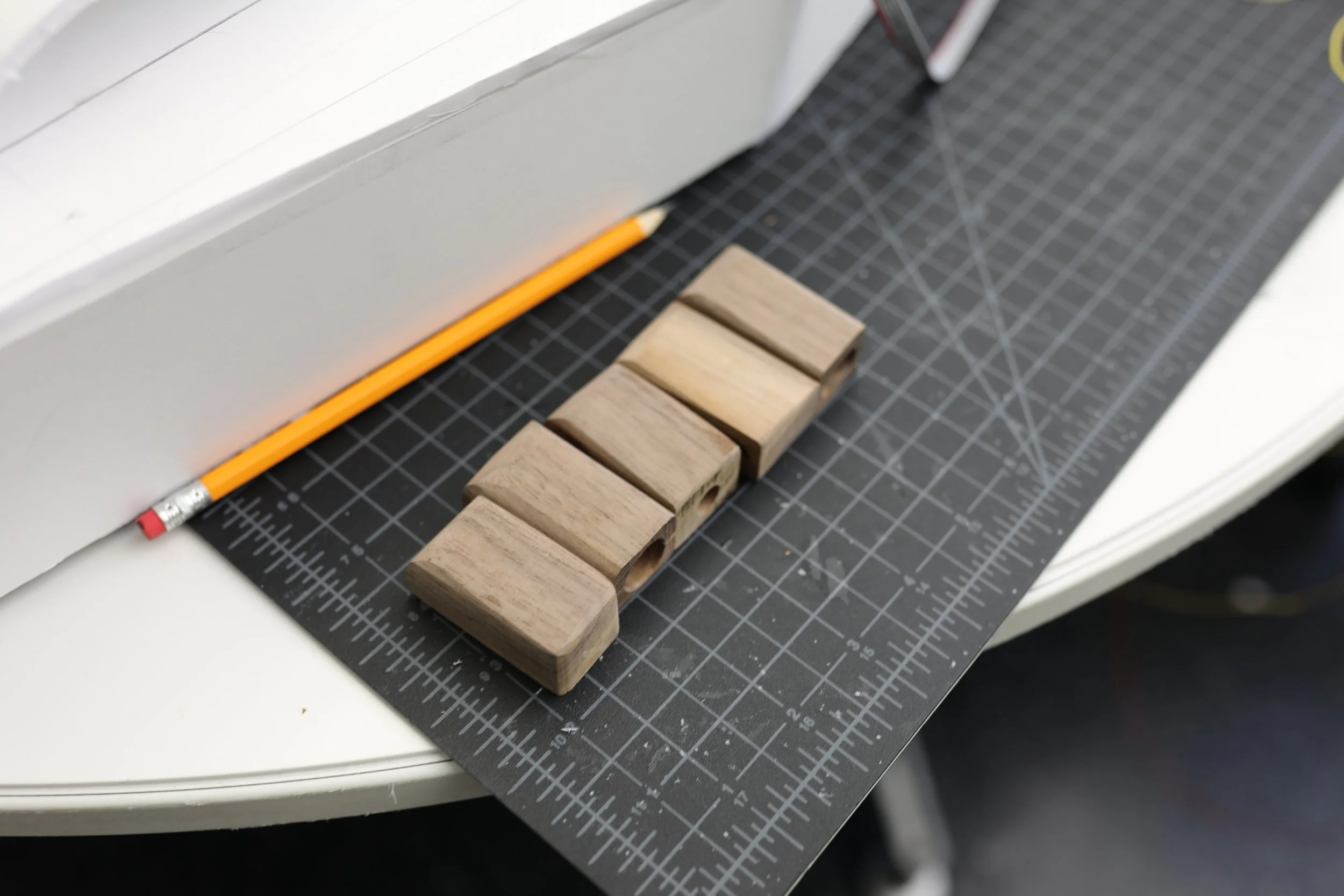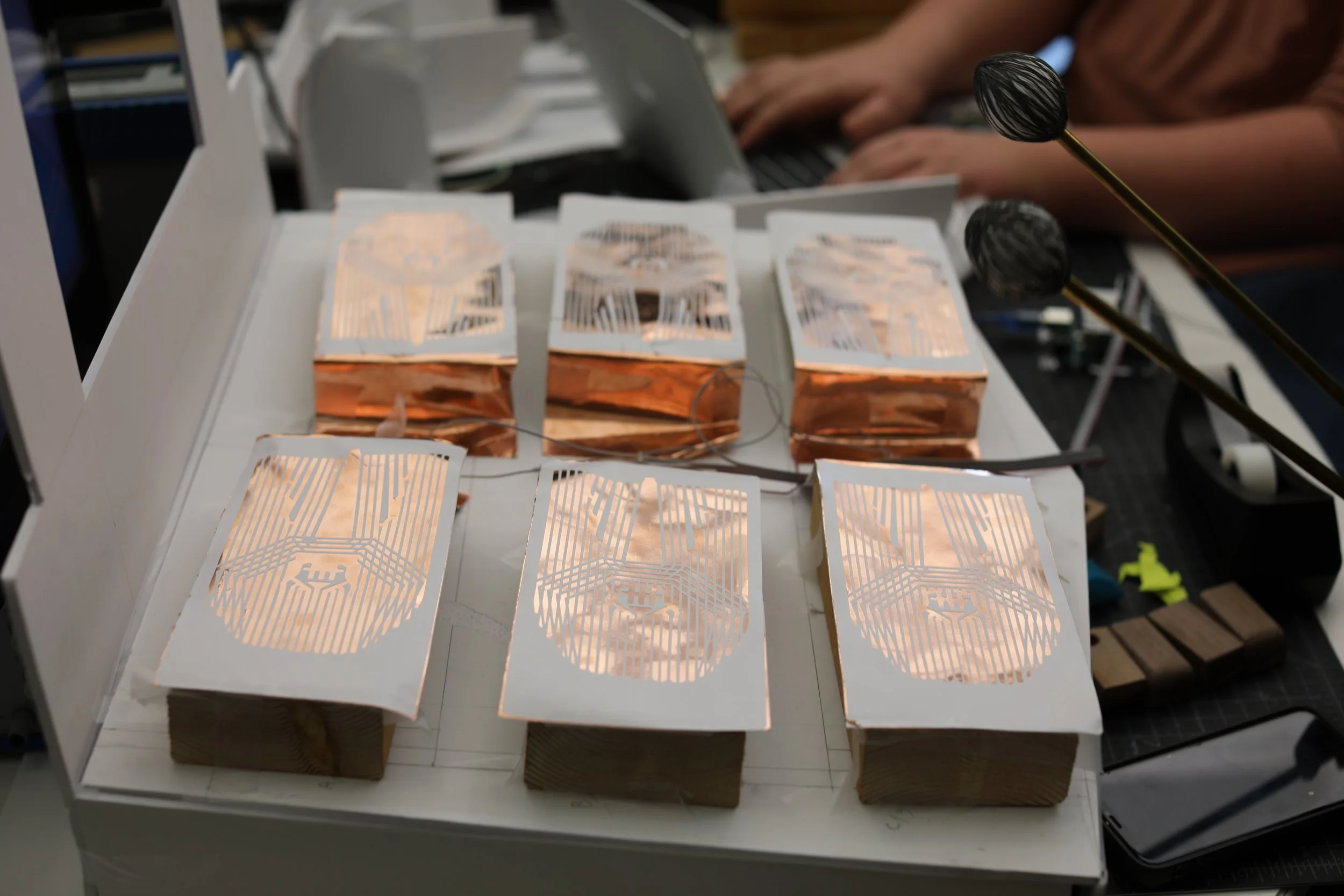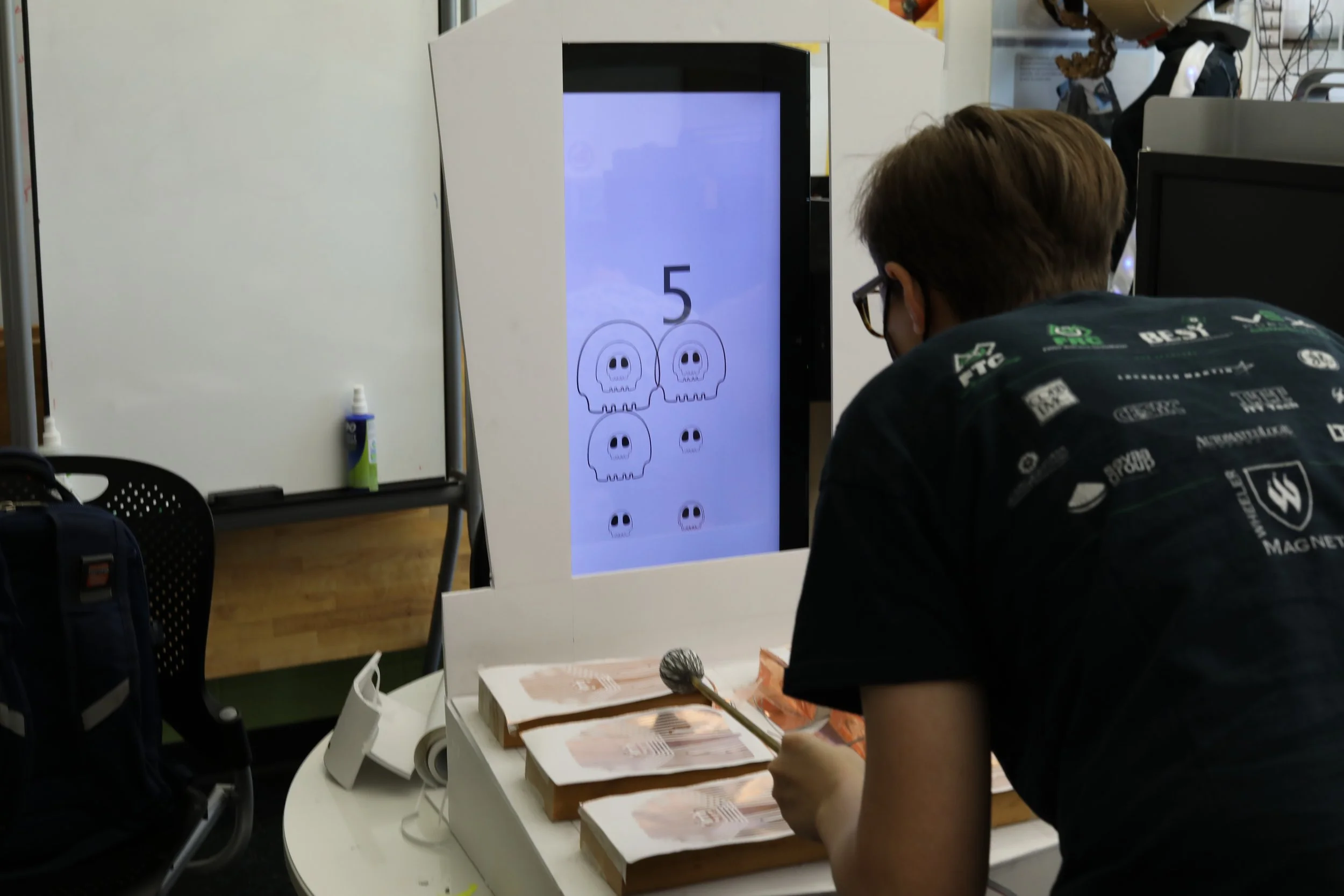
Tone Death
Prompt: Discover what elements make up an arcade game and build a game based off of those criteria.
An arcade game is vastly different than a normal video game, but how? What are the specific details that differentiate a game that could be produced as a life-size, physical arcade game compared to that of a popular at-home-play through a video game console video game? The Tone Death team dives into an exploration of arcade game archetype, criteria, and definition in our attempt to design and produce a working arcade game.
Archetypal Research
Preliminary Categorization Structures
Each image is an image of an arcade game we play tested from Dave and Buster’s grouped into different categories.
Arcade Game Design Dimensions
A variety of different identifying aspects of arcade games that will be the building blocks of how we tried to determine archetypes.
Environment Interactivity
The degree that the environment/level in a game serves both as a mechanical and aesthetic purpose in gameplay.
Immersion
The level at which a player is engaged in the game they are playing and perceive themself as in the game rather than playing a game.
Embodiment
How important, beneficial, and natural it is for someone is to use different amounts of their bodies for different games.
Outcome Control
The degree to which a player’s actions influence the result of the game.
Conflict Amount/Directness
The way in which the action of the game is directed through.
Complexity
The number of distinct elements that are relevant to gameplay.
Cohesion
The degree to how much individual elements of a particular game are connected by motivation, incentive, or goal.
Competitive Measure
The method in which the interaction allows the user to keep track of their current progress in a competitive game and incentivize the user to keep playing
Archetypal Discovery Matrix
Each number along the top of the graph represents one of the Arcade Game Design Dimensions location above and ranked on a 1-5 for each criteria. This style of Archetypal Analysis was developed from Zachary Pousman and John Stasko called A Taxonomy of Ambient Information Systems: Four Patterns of Design
Process
Sketching - - Low Fidelity Foamcore Modeling - - Coding in Processing and C++
Mood Board
Initial Sketches
Low Fidelity Model
Play Testing
Final Design
Coding in Processing and C++ - - Circuit Building - - Carpentry - -Videography
Journey through the underworld to build your undead band. Each boss you face and defeat joins your band including monstrous legends like Metatarsals Jones and the Triumperate. Follow the beat and play on your rib cage to match the skulls. If the skull turns green, you hit it perfectly! A red skull means you broke the rhythm and you need to get back in tempo. Discover a new beat with this entertaining arcade game combining a campy storyline with the awesomeness of classic rhythm games like Guitar Hero or Osu.

